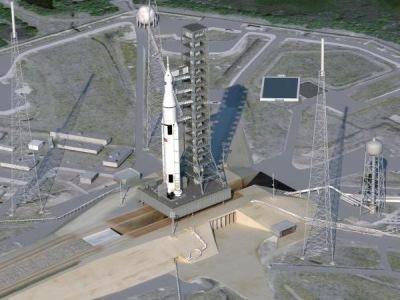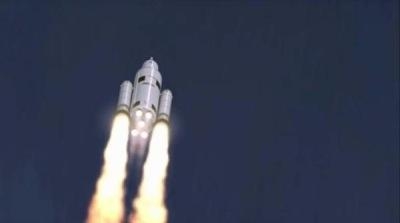Wed, Jan 16, 2013
Nine Universities To Share $2.25 Million
NASA has awarded grants to nine universities for advanced development activities for the nation's next heavy-lift rocket, the Space Launch System (SLS). The agency is providing approximately $2.25 million that will be shared by all the proposals under this NASA Research Announcement to seek innovative and affordable solutions to evolve the launch vehicle from its initial lift capability to a larger, future version of the rocket.

NASA sought proposals in a variety of areas, including concept development, trades and analyses, propulsion, structures, materials, manufacturing, avionics and software. "Partnering with academia on SLS advanced concepts brings new ideas and vitality to NASA and expands the SLS team of rocket scientists beyond just the agency," said William Gerstenmaier, associate administrator for Human Exploration and Operations at NASA Headquarters in Washington.
The selected universities and their proposals are:
- "High Electric Density Device for Aerospace Applications," Auburn University.
- "Challenges Towards Improved Friction Stir Welds Using On-line Sensing of Weld Quality," Louisiana State University.
- "A New Modeling Approach for Rotating Cavitation Instabilities in Rocket Engine Turbopumps," Massachusetts Institute of Technology.
- "Algorithmic Enhancements for High-Resolution Hybrid RANS-LES Using Loci-CHEM," Mississippi State University.
- "Characterization of Aluminum/Alumina/Carbon Interactions under Simulated Rocket Motor Conditions," Pennsylvania State University.
- "Development of Subcritical Atomization Models in the Loci Framework for Liquid Rocket Injectors," University of Florida.
- "Validation of Supersonic Film Cooling Numerical Simulations Using Detailed Measurements and Novel Diagnostics," University of Maryland.
- "Advanced LES and Laser Diagnostics to Model Transient Combustion-Dynamical Processes in Rocket Engines: Prediction of Flame Stabilization and Combustion-Instabilities," University of Michigan.
- "Acoustic Emission-Based Health Monitoring of Space Launch System Structures," University of Utah.
"As we make tangible progress on the initial launch vehicle, our advanced development team is formulating concepts for an evolved version of the rocket," said Todd May, SLS Program manager at NASA's Marshall Space Flight Center in Huntsville, Ala. "The work being done today on SLS is a national and collaborative effort. With faculties and students engaged now, we look forward to creative, innovative and more affordable strategies to guide development of the next-generation heavy-lift launch vehicle."

The SLS is designed to be flexible for launching payloads and spacecraft, including NASA's Orion Multi-Purpose Crew Vehicle. NASA says the rocket will enable the agency to achieve its deep-space exploration goals and create new possibilities for scientific discovery. The period of performance for these grants will be one year with as many as two one-year options.
The first flight test of NASA's SLS, which will feature a configuration for a 70-metric-ton (77-ton) lift capacity, is scheduled for 2017 from NASA's Kennedy Space Center in Florida.
More News
Also: New Lakeland Fly-in!, Gleim's DPE, MOSAIC! Nearly three-quarters of a century in the making, EAA is excited about the future… especially with the potential of a MOSAIC>[...]
Estimated (EST) -When used in NOTAMs “EST” is a contraction that is used by the issuing authority only when the condition is expected to return to service prior to the >[...]
Aero Linx: Regional Airline Association (RAA) Regional airlines provide critical links connecting communities throughout North America to the national and international air transpo>[...]
The Airplane Broke Up In Flight And Descended To The Ground. The Debris Path Extended For About 1,435 Ft. Analysis: The pilot, who was the owner and builder of the experimental, am>[...]
From 2015 (YouTube version): History Comes Alive Thanks to A Magnificent CAF Effort The story of the Douglas C-47 named, “That’s all Brother,” is fascinating from>[...]
 Airborne 07.21.25: Nighthawk!, Hartzell Expands, Deltahawk 350HP!
Airborne 07.21.25: Nighthawk!, Hartzell Expands, Deltahawk 350HP! ANN's Daily Aero-Term (07.27.25): Estimated (EST)
ANN's Daily Aero-Term (07.27.25): Estimated (EST) ANN's Daily Aero-Linx (07.27.25)
ANN's Daily Aero-Linx (07.27.25) NTSB Final Report: Luce Buttercup
NTSB Final Report: Luce Buttercup Classic Aero-TV: 'That's All Brother'-Restoring a True Piece of Military History
Classic Aero-TV: 'That's All Brother'-Restoring a True Piece of Military History




